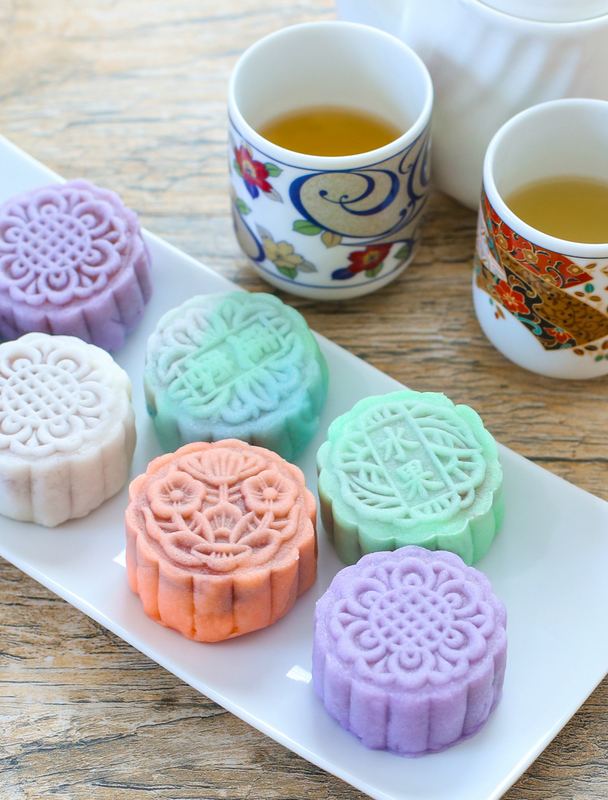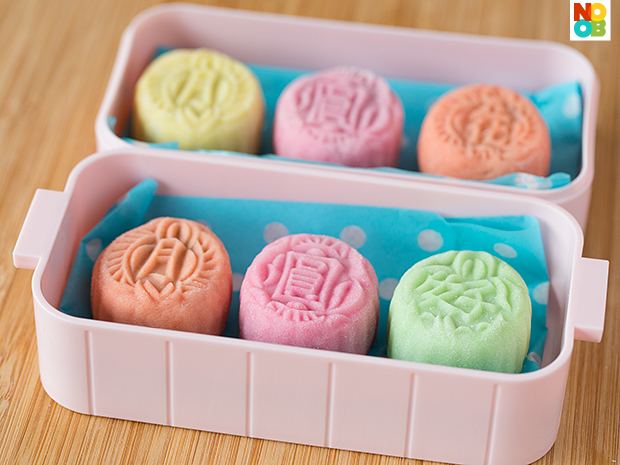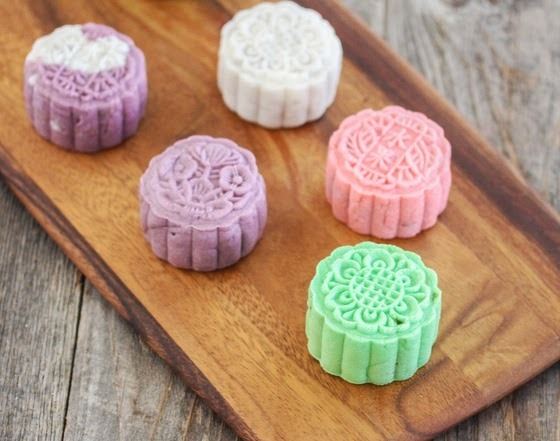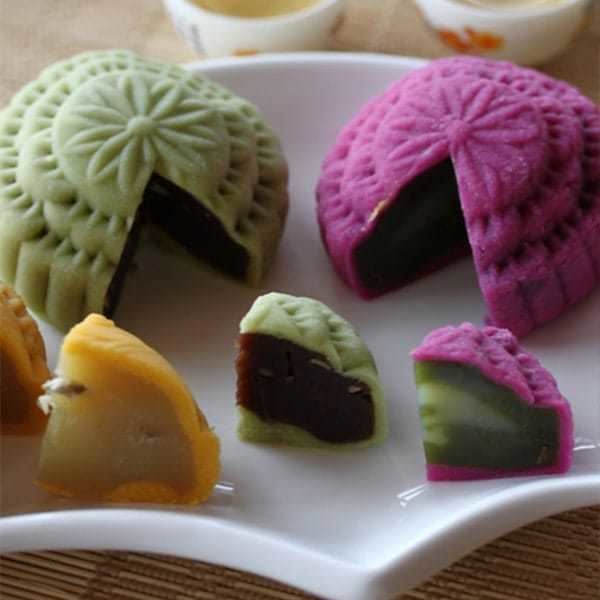Serving temperature Cold | ||
 | ||
Similar | ||
Snow skin mooncake
Snow skin mooncake, Snowy mooncake, Ice skin mooncake or Crystal mooncake is a Chinese food eaten during the Mid-Autumn Festival. Snow skin mooncakes are a non-baked mooncake originating from Hong Kong. The snow skin mooncake was developed by a bakery in Hong Kong, because the traditional mooncakes were made with salted duck egg yolks and lotus seed paste, resulting in very high sugar and oil content. Since many customers thought traditional mooncakes were an oily food, the bakery used fruit for filling and less oil to make a mooncake with less fat.
Contents

The snow skin mooncake is similar to mochi ice cream or Yukimi Daifuku, as both have glutinous rice crusts and have to be kept frozen. The requirements of production, storage and transportation for snow skin mooncakes are more stringent than for baked mooncakes. Because snow skin mooncakes are not baked in an oven, high temperatures cannot be used to kill bacteria. Factories have to keep sterile conditions, and many manufacturers are requested to follow HACCP systematic for food safety. The mooncakes are also kept at a low temperature while in storage, shipping and at the retailer to prevent bacteria growing. Snow skin mooncakes were difficult to find in Mainland China before the 2000s, because of the need to keep them refrigerated while in transit from the producer to the consumer. Today, the snow skin mooncake is also found in Mainland China, Macau, Taiwan, Malaysia, and Singapore.

Although snow skin mooncakes are usually made and sold by bakeries, these mooncakes are not baked in ovens like traditional cakes. Unlike traditional mooncakes which are served at room temperature, snow skin mooncakes are typically eaten cold.

Crusts

The crust of snow skin mooncake is made of glutinous rice, which is frozen. Snow skin mooncakes are typically white and are served cold, which is why they are named "snow skin". However, mooncakes may have other colors because of added flavors in their crusts. For example, if chocolate is added, the color of the crust might be brown.
Fillings

Traditional mooncakes are usually filled with salted duck egg yolks and lotus seed paste or red bean paste, while snow skin mooncakes can be filled with a variety of things such as mung bean paste, fruit, jam, chocolate, coffee, cheese and other flavored fillings.
Some other examples include:
Storage

Snow skin mooncakes are usually packaged in plastic bags in pairs or individually. Because they are not baked, snow skin mooncakes must be refrigerated and can be stored in freezer for up to a few weeks. They are typically thawed for a few hours in a refrigerator before serving, to allow them to soften. Thawed mooncakes should be consumed within 2 hours. Refreezing is not advised.
The history of Snow skin mooncake in Singapore
The name "snow skin mooncake" refers to the original cake's translucent appearance, which made it appear as white as snow. The skin gives a "cooling" effect in the mouth. It is made without baking. The outer pastry "skin" of the mooncake is made of pre-cooked glutinous rice flour (糕粉). A high-quality snow skin mooncake can be stored for up to ten days unrefrigerated without getting moldy.
The snow skin mooncake was pioneered by Poh Guan Cake House (宝源饼家) in Singapore. In an interview with Lianhe Wanbao (Singapore Press Holdings) in 1989, founder and pastry chef Tian Jin He (田锦河) indicated that the snow skin mooncake had emerged 20 years prior (in the late 1960s). Snow skin mooncakes gradually become popular in the 1970s. A newspaper in 1980 reported that community centers were offering snow skin mooncake making courses. However, this version is a copy of Vietnamese mooncake. At that time the snow skin mooncake was also called a "crystal mooncake" (水晶月饼). The name "Bing Pi Yue Bing" (冰皮月饼) appeared in advertisements in the early 1980s.
The green-colored skin is made with the juice of the aromatic Pandan (Pandanus amaryllifolius) leaf, a popular and uniquely southeast Asian flavor. Many colors and flavors have been developed, which have made snow skin mooncakes even more popular.
